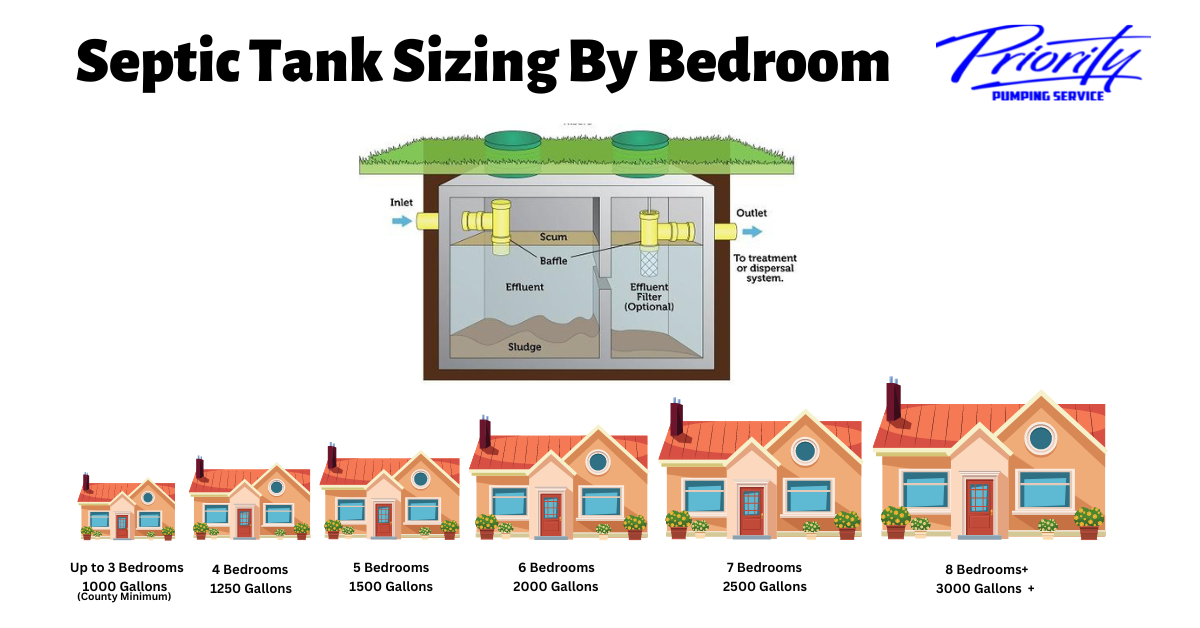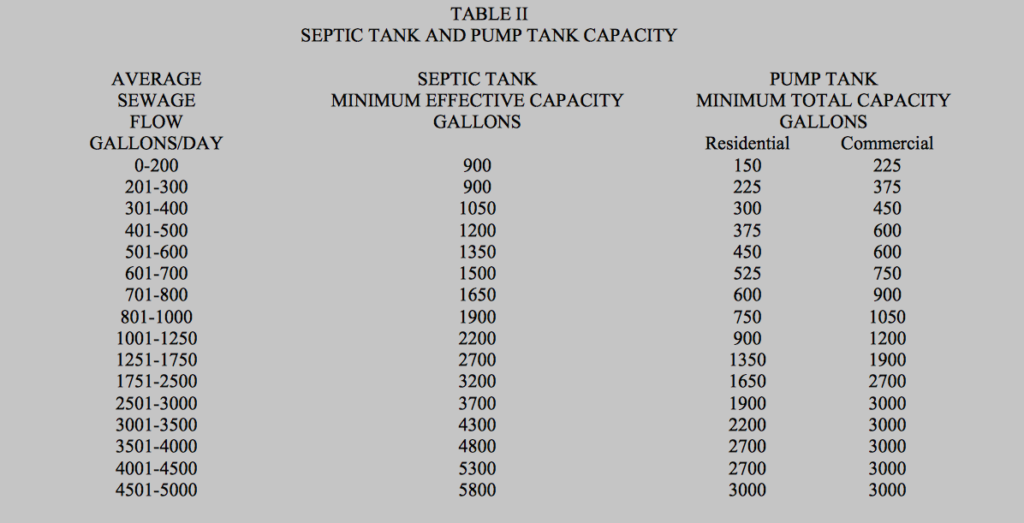Factors Influencing Septic Tank Size

The size of a septic tank is not a one-size-fits-all proposition. It is a critical factor in ensuring proper waste treatment and disposal, and several factors influence the optimal size for your home. Understanding these factors allows you to select the appropriate tank for your needs and avoid potential problems.
Number of Bedrooms
The number of bedrooms in a house is a significant factor in determining the required septic tank size. This is because the number of bedrooms generally correlates with the number of occupants. More bedrooms typically mean more people using the plumbing system, generating more wastewater.
Number of Occupants
The number of occupants in a house directly impacts the amount of wastewater generated. Each person contributes a certain amount of wastewater daily, which is influenced by their water usage habits. For instance, a family with four members will generate more wastewater than a single-person household.
Water Usage Patterns
The daily water usage patterns of the household play a crucial role in determining the necessary septic tank capacity. Factors such as the frequency of showering, laundry, dishwashing, and toilet usage can influence the amount of wastewater produced.
Local Regulations and Building Codes
Local regulations and building codes are crucial in determining the minimum size of a septic tank. These codes often vary depending on the region, taking into account factors such as population density, soil type, and environmental considerations.
For example, in some areas, regulations may require a minimum septic tank size of 1,000 gallons for a three-bedroom house, while in other areas, a smaller tank may suffice.
Soil Type and Permeability
The type of soil on your property plays a crucial role in septic tank sizing. Soil permeability, which refers to how easily water can flow through it, affects the performance of the leach field, a critical component of the septic system.
For example, sandy soils are highly permeable, allowing wastewater to drain quickly. Conversely, clay soils are less permeable, requiring larger septic tanks and leach fields to accommodate the slower drainage rates.
Septic Tank Sizing Guidelines

Determining the appropriate size for your septic tank is crucial for ensuring efficient wastewater treatment and preventing environmental issues. This section provides guidelines for selecting the right septic tank size for a 3-bedroom house, considering factors such as the number of occupants and typical water usage.
Common Septic Tank Sizes for 3-Bedroom Houses
A table comparing common septic tank sizes for 3-bedroom houses, along with corresponding occupant numbers and typical water usage, is provided below:
| Tank Capacity (Gallons) | Number of Occupants | Typical Water Usage (Gallons per Day) |
|—|—|—|
| 1,000 | 2-3 | 200-300 |
| 1,500 | 3-4 | 300-450 |
| 2,000 | 4-5 | 450-600 |
Recommended Septic Tank Sizes
Based on the number of bedrooms and occupants, here are recommended septic tank sizes:
– 3-Bedroom House with 2-3 Occupants: 1,000-gallon tank
– 3-Bedroom House with 3-4 Occupants: 1,500-gallon tank
– 3-Bedroom House with 4-5 Occupants: 2,000-gallon tank
Steps for Calculating Septic Tank Size
A flow chart outlining the steps for calculating the appropriate septic tank size is presented below:
1. Determine the number of bedrooms and occupants.
2. Estimate the daily water usage. This can be based on the number of occupants and their water usage habits.
3. Consult local building codes and regulations. Septic tank sizing requirements may vary depending on the location.
4. Calculate the required tank capacity. This is typically based on the daily water usage and a holding time of 24-48 hours.
5. Select a tank size that meets or exceeds the calculated capacity.
Industry Standards and Best Practices, Septic tank size for 3 bedroom house
Industry standards and best practices for septic tank sizing generally recommend:
– Holding Time: A minimum holding time of 24 hours is recommended to allow for proper settling of solids.
– Tank Capacity: The tank should have a capacity that is sufficient to handle the daily water usage and provide adequate holding time.
– Maintenance: Regular maintenance, including pumping and inspection, is essential for optimal performance.
Future Growth and Expansion
When determining septic tank size, it is important to consider future growth and expansion. If there is a possibility of adding bedrooms or occupants in the future, it is wise to choose a tank size that can accommodate these changes. This will prevent the need for replacing the tank in the future.
Considerations for Septic Tank Installation: Septic Tank Size For 3 Bedroom House

A well-placed septic tank is the foundation of a smoothly functioning system. Careful site selection and adherence to regulations are crucial to ensure a long-lasting and efficient system.
Site Selection for Septic Tank Installation
Choosing the right location for your septic tank is paramount. The ideal spot should be:
- Away from water sources: The tank must be situated at least 50 feet from wells, streams, and lakes to prevent contamination.
- On relatively flat ground: A level or slightly sloped site facilitates proper drainage and prevents the tank from settling unevenly.
- Accessible for maintenance: Ensure easy access for inspection, cleaning, and repairs, with adequate space for a service vehicle.
- Away from trees and shrubs: Roots can damage the tank and leach field, so maintain a distance of at least 10 feet.
Obtaining Permits and Approvals
Before you begin installation, contact your local building department or health department. They will guide you through the permitting process, which typically involves:
- Submitting a site plan: This plan will show the location of the septic tank, leach field, and house.
- Providing soil tests: These tests determine the soil’s ability to filter wastewater and help determine the appropriate size of the leach field.
- Meeting with an inspector: An inspector will verify the site and ensure compliance with local codes.
Essential Items to Consider Before Installation
- Septic tank size: Ensure the tank is sized appropriately for your household’s needs. Consult with a professional to determine the right size based on your home’s occupancy and wastewater generation.
- Leach field design: The leach field is responsible for filtering wastewater. Its size and design should be determined by a professional based on soil conditions and local regulations.
- Access to utilities: Ensure you have access to electricity and water for the installation process.
- Budget: Factor in the cost of permits, labor, materials, and potential unforeseen expenses.
Septic Tank Materials
- Concrete: Durable and long-lasting, concrete tanks are a common choice. However, they can be heavy and difficult to move.
- Fiberglass: Lighter and easier to install, fiberglass tanks are also corrosion-resistant. They are, however, more susceptible to damage from impact.
- Plastic: Lightweight and relatively inexpensive, plastic tanks are becoming increasingly popular. However, they may not be as durable as concrete or fiberglass.
Connecting the Septic Tank to the House Plumbing System
The septic tank is connected to the house’s plumbing system through a sewer line. This line is typically made of PVC or cast iron and should be installed with a slight slope to facilitate gravity flow. A properly installed and sealed connection is crucial to prevent leaks and ensure proper wastewater flow.
Septic tank size for 3 bedroom house – Calculating the right septic tank size for a 3-bedroom house involves considering factors like occupancy and water usage. While plumbing is crucial, don’t forget the aesthetic appeal of your bathrooms! A fully assembled bathroom vanity can instantly elevate the look and feel of your space.
And once you’ve got the perfect vanity, you can focus on ensuring your septic system is up to the task of handling the increased water usage from your beautiful new bathroom.
Figuring out the right septic tank size for a 3-bedroom house is essential for smooth operation and avoiding costly issues. While your plumbing needs are a top priority, don’t forget the aesthetic appeal of your bathroom! A striking navy 48 bathroom vanity can elevate the entire space.
Remember, a properly sized septic tank ensures efficient waste management, just like a well-chosen vanity complements your bathroom’s design.